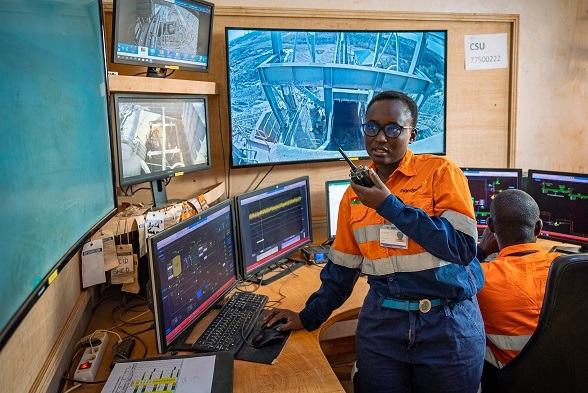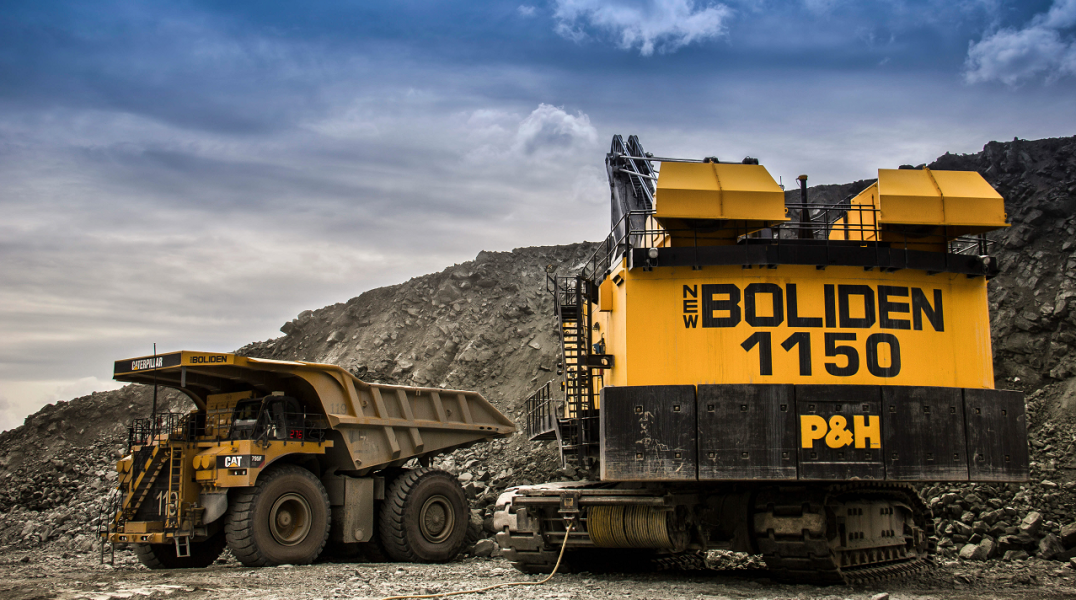Alan Swaby looks at a now thriving business that was once rejected as having no marketing potential.
Like evolution and survival of the fittest, the beauty of the free market is that it encourages new life forms. Take the case of Andalusite Resources in South Africa as an example. It is now sitting on a successful and potentially very valuable business because the once dominant life force became complacent and relaxed its guard, enabling a new life form to gain a toe-hold.
The consequence of that is that Andalusite Resources’ mine in northern South Africa is on territory surveyed and overlooked by the market leader—once the monopoly supplier of andalusite to the world. Today, Andalusite Resources already has a 20 per cent market share—and that could become even larger.
The story starts in 2001 when the business was set up to exploit known reserves 220 kilometres north-west of Johannesburg at a place called Maroeloesfontein near the town of Thabazimbi, smack in the middle of a very important and extensive mining region of the country. The managers behind Andalusite Resources had already tried another South African site of andalusite without much success; but within the group of shareholders and promoters, there was some experience of refractory manufacturing and therefore it was well understood what was needed from this material.
“We operate in a very specialised area of industry,” describes sales and marketing director Andreas Pabst. “Andalusite is used in refractory materials of many different kinds; but the technology behind refractories is very demanding regarding the specification of the raw material it uses.”
Andalusite is used in a wide range of applications but the majority goes into refractory materials used by the iron and steel industry, in either cast forms such as bricks or an unshaped, monolithic version of the material. Either way, though, the refractory industry needs a range of crystal sizes and very specific chemical properties. The reason why Maroeloesfontein was overlooked is that it produces crystals at the smaller end of the spectrum and it was once thought that only larger crystals were most marketable. Since then, changes in technology, but more appropriately in attitude, have opened the market for the crystal size that Andalusite Resources now offers.
“The market we operate in is very dynamic,” comments finance director Colin Bain, “and although technology is paramount, price comes a close second. Consequently, the current high price of bauxite is leading to greater interest in andalusite, as it can serve as a substitute to bauxite in a number of applications.”
Bauxite is often the material of choice for refractory materials, but much of it comes from China—and the Chinese can use a large proportion of all the bauxite they mine themselves. As such, exports have been restricted to the extent that the price has risen 300 per cent in three years. Not surprisingly, alternative approaches have been sought.
“But industry can’t switch at a moment’s notice,” says Pabst. “It could take a year or 18 months for a steel plant to prepare itself properly [to use andalusite].” Nevertheless, Andalusite Resources managed to convince enough users to try its form of andalusite—branded under the name of Marlusite, after the name of the mine—for it to be a profitable and going concern, with reserves sufficient for 20 years, based on a production rate of 30,000 tons per annum.
Since then, the company has surveyed the site more extensively and discovered much bigger reserves. Last year, production was more than doubled to 70,000 tons per annum and even at this rate there is now enough minable ore to last for 80 to 100 years.
“In fact,” says Pabst, “there is much more ore on the site than we ever envisaged. We plan to go to a depth of 35 metres but we have found the mineral down to 70 metres. However, we won’t be going that far, as that doesn’t offer what the market wants at this moment.”
As it is, mining at Maroeloesfontein is relatively simple. For every ton of ore there is 14 per cent andalusite, of which seven per cent is recoverable and the remainder too small to be of interest. The deposits start four metres below a soft overburden that is easily stripped and then the ore can be dug out by excavator without any blasting necessary.
The beauty of this site is that although Andalusite Resources is open mining in three different locations, they are no more than a stone’s throw away from each other and the processing plant. Nevertheless, the variation in conditions over this short distance has thrown up some challenging metallurgical processing problems. “If you looked into each pit,” says Blain, “you’d think they were three completely different locations. To the south, the soil is heavy clay which initially choked the crushing and screening plant. To the north, the conditions are good but the yield lower; and in the third pit there are certain silicate impurities which shatter and are hard to get out of the process before they enter the final product.”
There is even a non-magnetic iron oxide called goethite that was able to find its way through the magnetic screening until Andalusite Resources called upon the services of a specialist manufacturer capable of developing a new magnetic separation system requiring special magnets and extremely precise material flow rates.
Although the refining process requires a good deal of careful management and tight control, the technology is commonplace, based on multiple crushing, washing and screening stages until the crystals have been sorted into their various sizes. It’s a process that needs no chemicals but does rely on copious amounts of water.
“It’s a very thirsty process,” says Pabst, “that uses 500,000 litres of water an hour! However without any aggressive chemicals to treat, we can recycle 70 per cent of the water immediately and as we only use water from our own boreholes, you could say we recycle 100 per cent as all water will eventually soak back into the underground aquifers, from which we draw our water in the first place.” The water levels are monitored regularly to ensure that ground water is not depleted and the mine runs have fully sustainable levels of water usage vis-à-vis available water reserves.
With constantly rising prices of bauxite, the market looks good—but Andalusite Resources is taking no chances. A project is currently underway with the German refractory specialist Mine Feurfest to study how bauxite can be replaced entirely with andalusite in specific applications. If the results of the 12 month study are as favourable as expected, evolution will once again take a big step forward.
The world is thirsty for raw materials and there is an increasing scarcity of vital industrial minerals. Andalusite Resources is in a good position to take advantage of the future demand that will be fuelled by the world’s appetite for growth. www.andalusiteresources.com



 AndalusiteRESOURCES_JUL11_emea_BROCH_s.pdf
AndalusiteRESOURCES_JUL11_emea_BROCH_s.pdf









